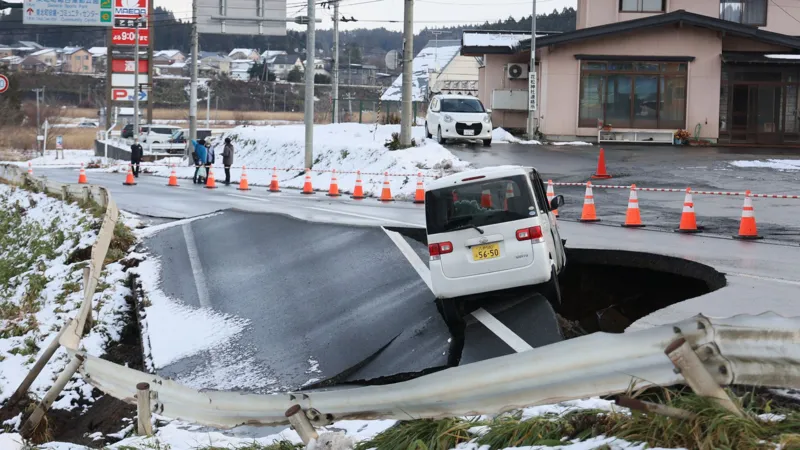UN Security Council Faces Deadlock Over Gaza Ceasefire Resolution Amid Intensifying Humanitarian Crisis
- Rahmani Khoshnaw

- Jun 13
- 5 min read
Khoshnaw Rahmani, JadeTimes Staff
K. Rahmani is a Jadetimes news reporter covering politics.

US Veto Blocks Immediate and Permanent Ceasefire in Gaza
On June 4, 2025, the United States cast its lone veto in the United Nations Security Council, blocking a draft resolution that would have demanded “an immediate, unconditional and permanent ceasefire” in Gaza and unhindered humanitarian access across the enclave. The resolution, co-sponsored by ten non-permanent Council members, garnered 14 votes in favor before falling to the US veto, which cited the draft’s failure to condemn Hamas or require its disarmament and withdrawal from Gaza.
Within hours of the vote, Israeli airstrikes killed at least 95 Palestinians in a single day, deepening fears of an impending famine in a territory where aid has trickled in only sporadically since May 19th. Diplomats from China, the United Kingdom, Pakistan, Slovenia, and other Council members decried the veto as a grave setback for international humanitarian law and civilian protection. Palestinian UN envoy Riyad Mansour warned that history would judge the Security Council harshly for its inaction.
The Role and Structure of the UN Security Council
Established by the UN Charter in 1945, the Security Council is tasked with maintaining international peace and security. Its 15 members include five permanent powers—United States, United Kingdom, France, Russia, and China—each wielding veto authority over substantive resolutions. The remaining ten seats rotate among UN member states for two-year terms, reflecting a broader geographical distribution of influence. When a permanent member vetoes a resolution, the measure is automatically blocked, regardless of overall support.
A Comprehensive History of the UN Security Council
1945 – Founding of the UN and Security Council: As World War II drew to a close, the UN Charter was adopted in San Francisco, creating the Security Council as the principal organ for conflict resolution and peacekeeping.
1950s–1960s – Early Cold War Vetoes: The Council’s first veto came in 1946 by the Soviet Union. Throughout the Cold War, vetoes became tools for superpower rivalry, often stalling collective action on crises in Korea, Hungary, and the Middle East.
1970s–1990s – Expansion of Peacekeeping Mandates: Under secretaries-general like U Thant and Javier Pérez de Cuéllar, the Council authorized larger peacekeeping operations in Cyprus, Lebanon, and post-colonial Africa, gradually broadening its scope beyond ceasefires.
2000s–2010s – Counterterrorism and the “Responsibility to Protect”: In the wake of 9/11, the Council passed landmark resolutions on sanctions against terrorist networks and endorsed the doctrine that the international community must protect civilians from genocide, war crimes, ethnic cleansing, and crimes against humanity.
2020s – Great Power Frictions and Humanitarian Impasses: Russia’s annexation of Crimea, Syrian civil war vetoes, and recurrent deadlocks over Gaza have underscored the Council’s vulnerabilities to geopolitical divides. The US veto on June 4—its fourth on Gaza ceasefire measures since October 2023—illustrates the ongoing struggle between humanitarian imperatives and strategic alliances.
The Gaza Crisis: From October 2023 to the Present
October 7, 2023 – Hamas Attack on Israel
Hamas militants launched a coordinated raid into southern Israel, killing some 1,200 people and seizing roughly 250 hostages, drawing international condemnation and triggering a major military response.
October 2023–March 2025 – Israeli Military Campaign
Israel’s counteroffensive devastated Gaza’s infrastructure and civilian neighborhoods. By early 2025, Gaza health authorities reported over 54,000 Palestinian fatalities and thousands more missing beneath rubble.
January 19, 2025 – Temporary Ceasefire Brokered
Mediated by Egypt, Qatar, and the US, a two-month truce allowed limited humanitarian aid into Gaza. The agreement collapsed in March when both sides accused the other of violations.
March 18, 2025 – Resumption of Hostilities
With the truce broken, Israel resumed an intense air and ground offensive across Gaza, further eroding essential services and entrenching civilian deprivation.
May 19, 2025 – Partial Humanitarian Reopening
Under mounting international pressure, Israel permitted limited UN-led aid deliveries. Simultaneously, the US-backed Gaza Humanitarian Foundation (GHF) launched a controversial distribution network criticized for militarizing relief efforts and displacing civilians.
June 4, 2025 – Security Council Deadlock
The latest UN Security Council draft demanded an immediate ceasefire, hostage release, and unrestricted aid. Its overwhelming support was nullified by the US veto, leaving Gaza’s 2.4 million residents at grave risk.
Current Diplomatic Efforts and Humanitarian Responses
Mediation Channels: Egypt, Qatar, and the US continue shuttle diplomacy in Doha, Cairo, and Washington, aiming to revive a phased ceasefire framework that includes a permanent halt to hostilities, full Israeli withdrawal, and a long-term reconstruction plan.
Gaza Humanitarian Foundation (GHF): Founded in early 2025 and funded primarily by the US and Israel, the GHF partners with private security firms to distribute aid at “secure sites.” Humanitarian groups argue its operations compromise neutrality and endanger civilians.
UN General Assembly (UNGA) Initiatives: Frustrated by the Security Council impasse, Palestinian leaders plan a UNGA emergency session next week. While General Assembly resolutions lack binding force, they can mobilize political pressure and fund multilateral relief programs.
International Aid Coalitions: The Red Cross, UNRWA, Médecins Sans Frontières, and dozens of NGOs operate under perilous conditions, negotiating with the Israeli military for humanitarian corridors and the safe passage of convoys into the hardest-hit areas.
Ceasefire Monitoring Proposals: Discussions are underway to deploy an Arab League-EU observer mission in Gaza, tasked with documenting ceasefire violations and reporting them directly to the UN Secretary-General. Full implementation hinges on host-nation consent and troop-contributing country commitments.
International Reactions and Broader Implications
Global Diplomacy: The US veto has strained relations with traditional allies. UK Ambassador Barbara Woodward decried the blockade of humanitarian relief as “unjustifiable, disproportionate and counterproductive”, while China’s envoy condemned the veto as a shield for impunity.
Humanitarian Law and Credibility: Legal experts warn that blocking a resolution amid a looming famine undermines the Security Council’s moral authority and its responsibility to uphold international humanitarian law.
Regional Stability: Analysts caution that protracted conflict in Gaza could ignite protests and destabilize Lebanon, Jordan, and the West Bank, exacerbating a broader Middle East crisis.
Future of Multilateralism: Persistent vetoes risk eroding trust in the UN system, prompting calls for reform—such as limiting P5 veto power in mass atrocity situations or expanding the Council to include more permanent members from the Global South.
A Defining Moment for Global Diplomacy and Humanitarian Action
The UN Security Council’s refusal to endorse a Gaza ceasefire on June 4, 2025, captures the entrenched divisions between strategic alliance and humanitarian necessity. As Israel intensifies its offensive and Gaza’s civilian population teeters on the brink of catastrophe, the world awaits whether alternative diplomatic avenues—UNGA resolutions, regional observer missions, and civil society coalitions—can fill the void left by the Council’s deadlock.
In the coming days, renewed mediation efforts and global advocacy will determine whether the cycle of violence gives way to a sustainable ceasefire and a credible reconstruction plan—or whether Gaza’s plight will deepen, leaving the international community’s highest peacekeeping body paralyzed by its own internal fractures.











































Comments